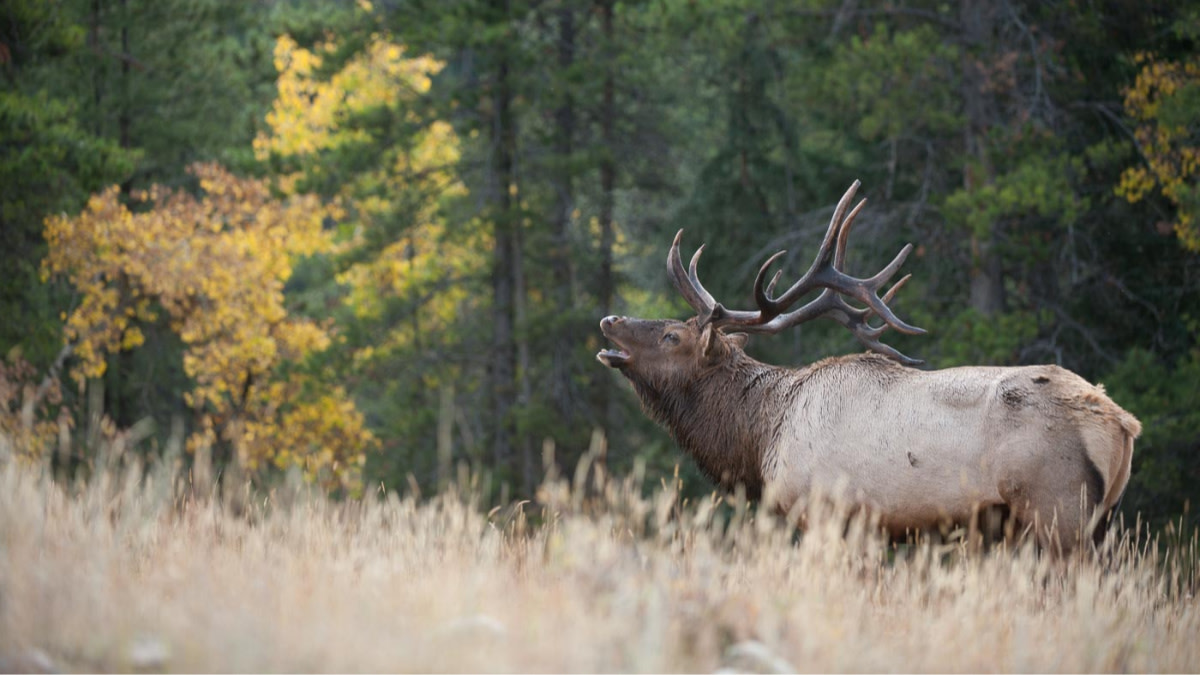
A public land, DIY bull elk is the white whale for most bowhunters. Sure, you might have a long conversation with one as it bumps its cows up to its favorite north-facing bench, but to get within bow range and run an arrow through his vitals? It isn’t easy.
In over-the-counter units, roughly 10% of elk hunters end up packing extra protein back down to the trailhead. The other 90% leave the dark timber exhausted and empty-handed.
Typical advice for those folks is that they should get in better shape and hike so deep into the backcountry that it’ll take two full days to get back to the truck. This is the go-to strategy for many, but it loses effectiveness as more and more hunters employ it. Plus, you can’t out hike an outfitter with a good string of horses.
This paints a stark picture for the aspiring elk hunter who can’t afford a guided hunt or trespass fees. But all hope is not lost. There are ways to increase your odds on an DIY bull, you’ve just got to heed the advice of some hunters who buck the odds year in and year out.
Outdoors writer, Colorado resident, and dedicated elk bowhunter, Lou Phillippe, has tons of hunting experience in his home state—the de facto destination for most traveling elk hunters—and believes that the elk are changing with the increased amount of hunters.
“Since the bowhunter population in Colorado has basically tripled, I’ve witnessed a crazy shift in elk movement,” Phillippe said. “If I’m hunting a unit with public land mixed with private, I often see the elk form what looks like wintering herds on the off-limits ground. It’s not uncommon to see hundreds of elk flee the forest to ride out the rut on private hay meadows. This might seem nuts, but over the last decade I’ve watched this happen more and more.”
This is one of the reasons Phillippe often chooses to hunt units with a high concentration of public land. Checkerboard units provide too many sanctuaries for the elk, and they know which fences to cross in order to avoid the masses of camo. In those areas, Phillippe suggests that it might be wise to ditch the outwork-the-competition mentality and try to out-think them.
“If I’m hunting an area where the elk can’t slip into private land, they seem to go to weird places. In fact, three of the biggest bulls I hunted recently were all within half of a mile of a road, right on the edge of wilderness areas. The key, a lot of times, is to forget about hunting from a trailhead and look for public ground that requires you to park and either walk straight up or straight down the mountain. Trailheads are the epicenter of hunting pressure and the elk know it, so you’ve got to look elsewhere to access bulls.”
If Phillippe can’t avoid other hunters, he’ll try to avoid doing the same thing as them. So, when the mountains are lit up with calls from other hunters, he’ll lay low. When there’s an excess amount of calling going on, like he often sees on weekends, he finds his best chance at killing a bull is on an ambush site.
JC Navarro, owner of That’s Bowhunting, is a Wyoming resident who has spent the bulk of his elk hunting career chasing public lands bulls in zero-point units. He disagrees with Phillippe, saying that when everyone else is calling, you just have to call better. It just so happens that he’s an elk calling master, which he uses to his advantage.
“With elk, you’ve got to hunt to your strengths. For me, that means calling. A lot,” Navarro said.
Navarro’s strategy involves getting up high early in the morning so he can get ahead of elk as they travel from food sources to bedding areas.
“When I end up at my first spot in the morning, I rip off a bugle,” Navarro said. “If I don’t get an answer, it’s time to sneak to the next ridge and start again. I do this because it seems like a lot of times you won’t get a response from a bull that is half of a mile away, but if you sneak in he’ll respond. I’m always working my way through the timber in search of good spots to bugle. And I bugle a lot.”
When he elicits a response, he tries to take the temperature of the bull and use that to inform his next moves. Often times, though, you can’t just rely on a public lands bull to come in screaming and let you know he’s on the way.
“The hardest thing for me is to be patient. I can talk myself into thinking the bull is moving off if he shuts up, but a lot of times he’s moving in but staying silent. That’s really common on public land because they get cagey,” Navarro said.
Sometimes you’ll come across a bull that throws caution to the wind and wants to talk to you. When that happens, you’re in a good situation.
“Those bulls are a gift, and I look at them like the asshole at the bar you just want to avoid all night because he’s trying to fight everyone,” Navarro said. “A bull like that is so callable—and killable. You just have to find him and get him talking.”
As is so often the case with public lands and pressured game, the folks who find consistent success where most fail are doing something different. They are reading the animals, but also the tactics other hunters are using, and adjusting their styles. Sometimes that means finding empty spaces among the crowds, and other times it means just doing something better.
This might take a mental reset for many of us, but if that’s what it takes to join the 10% who notch a tag, then it’s all worth it.
Feature image via Tony Bynum.






